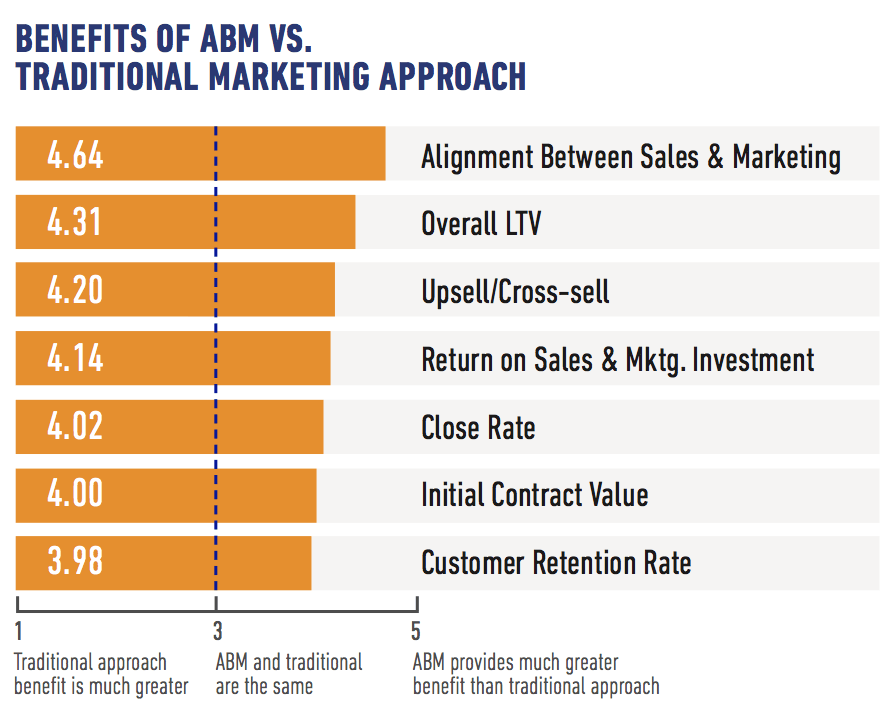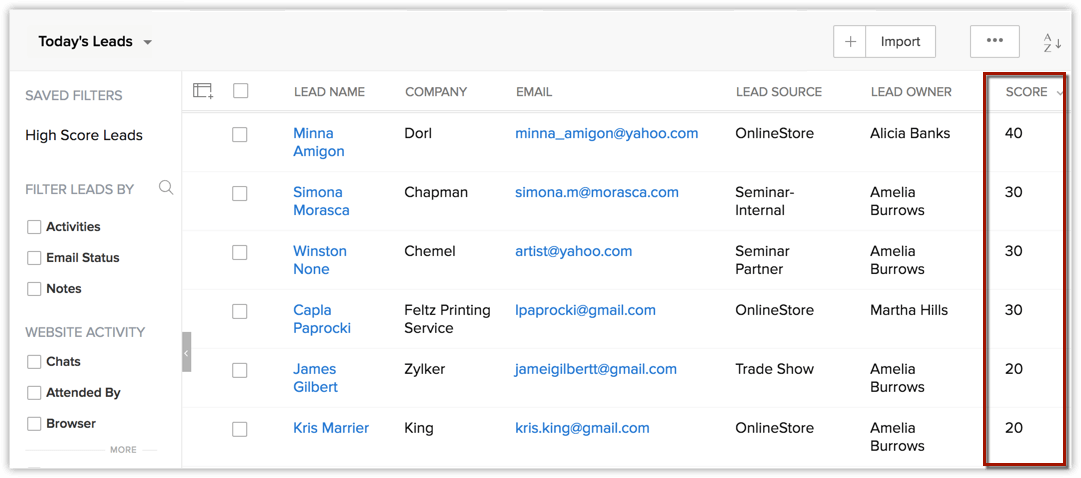
Generating high-quality leads is the biggest challenge for B2B marketers, and converting those leads into customers is the second biggest.
Your sales time is going to waste if your team is stuck on the phone talking to people who were never going to buy from you in the first place.
It’s not an uncommon problem. Most businesses with a good presence are going to see unqualified leads arriving on their site.
The key is that these people should never enter your sales funnel.
You should be doing everything you can to:
- Improve your sales productivity
- Improve existing lead quality
- Disqualify those who aren’t a fit
In this post, I’m going to show you actionable steps you can take to improve your B2B lead quality.
You’ll save time, and spend more time talking to prospects who are a perfect fit for your solution.
7 Ways to Improve The Quality of Your B2B Leads
1. Be Strict With Your Criteria for a Lead
When prospecting, start by zeroing in on companies that are a perfect fit for your offering.
Don’t settle for generic and broad criteria like “Our best leads are usually B2B SaaS companies”.
Make it more clear, for example:
- B2B SaaS
- 10-50 employees
- 1M-5M annual turnover
- Based in the USA or Canada
- Uses Salesforce and Adobe Analytics
That’s better than simply saying you target B2B SaaS companies, right?
Getting granular with your definition for a qualified lead is going to put your whole team on the same page.
You’ll be able to make sure you’re only contacting leads who are a perfect fit and avoid wasting hours every week talking with prospects who aren’t going to buy from you.
To help with this, you can use a B2B database like DemandScience.
Our data platform allows you to find leads based on criteria such as:
- Technographic data
- Firmographic data
- Demographic criteria
This means you can build qualified leads of lists in minutes, without having to guess if a company is a fit or not.
Our data is GDPR compliant, and a secret weapon for B2B marketers looking to scale their email outreach and see great results.
2. Ask For More Information Before Talking to a Lead
The best way to find out if a lead is qualified or not?
Ask them.
If you have demo sign-up forms or gated content that requires people to submit their details, add more fields and add more qualifying questions.
Use your forms to ask basic questions such as:
- How much they spend on solving problems you can help with (on gated content)
- Their budget (on a demo sign-up form)
- Their business email
- How many people in their team
All of these will help you quickly figure out whether a prospect is qualified.
If someone signing up for a demo, or consultation call, tells you that their budget is below your minimum contract value, then you’ll know that it’s not worth doing the demo.
Instead, you could set up an email automation that sends the person a friendly email explaining that your plans start at $x per year, and if their budget can stretch, you’d love a call. If not, you can recommend some budget-friendly alternatives.
Your form conversion rate may lower and you may get fewer total leads, but don’t panic.
As Bill Aulet says in Disciplined Entrepreneurship: “Getting a bunch of business cards at a trade show may get you a lot of leads (less cost per lead), but they are probably poor-quality leads.”
By adding more qualifying questions, your lead quality will increase and your team will spend less time on calls that you know are a waste of time.
That said, there’s no need to create a form with fifty fields that will drive even the most patient person crazy.
3. Double Down on Your Buyer Persona
Buyer personas are one of those things that every marketer talks about, but many forget about them after a few weeks on the job.
The best teams are always aware of their buyer persona and focus their marketing and sales efforts accordingly.
Study your buyers’ pain points, needs, and questions.
Figure out who your ideal customer actually is.
Define their job title, seniority, and position in the company hierarchy.
Once you’ve figured this out your strategy can be designed to speak directly to them.
For example, if you know that your ideal customer is the CMO at companies who have just raised a Series A, don’t waste time reaching out to Product Marketers at companies who have gone through an IPO.
Sticking to your buyer persona is simple, but it’s easy to forget.
Once you’re consistently targeting people that match your exact persona, your lead quality will rise.
4. Borrow Ideas from Account-Based Marketing Strategies
If you’re not already experimenting with ABM, consider taking some inspiration from how ABM campaigns work.
80% of marketers say that ABM improves their customer lifetime value, and 86% also say it improves their win rates.
As well as this, it improves alignment between sales and marketing, which will have benefits for your whole organization.

Instead of setting up your campaign simply with a certain type of customer in mind, start by defining a target account list.
Then, create your campaign in a way that ensures your target accounts will see, and engage with your campaign.
Your targeting, messaging, and the actions you want your leads to take will be contextual and help build confidence in your leads.
5. Build a Lead Scoring System to Filter Leads
If you’re struggling with your lead quality, consider investing in your lead scoring system.
It’s something that you should be thinking of from the very start of your campaigns, and considering all the way until you close the sale.
Most good CRMs will have lead scoring built-in, and you can assign value to specific actions and lead criteria.
Image: Lead Scoring in Zoho – Source: https://www.zoho.com/crm/resources/tips/lead-scores.html

For example, if someone engages with your campaign, they get a point. If they download an eBook, they get two more points. And so on.
Your sales team can then prioritize leads who are engaged and reach out to those before engaging with accounts who have just entered your pipeline.
A lead scoring model will help you build a clear picture of whether a prospect is ready to buy or not, if they have the budget, and if they’ll be a good fit for your product or service.
6. Tighten the Feedback Loop Between Marketing and Sales
If your sales team has ever complained about the marketing leads not being qualified, you’re not alone.
There’s often a discrepancy between MQLs and SQLs, but if you can solve that, you’ll see big improvements in lead quality.
Considering 50% of most sales reps time is spent on unqualified leads, ensuring marketing are only passing along good leads will save your sales team hours every week.
Your sales and marketing teams should be in regular communication, discussing things like:
- What your ideal customer looks like
- What acute problems you solve for them
- What wording they use to describe their problems
- Where your customers spend their time
Sharing knowledge about these questions will help your team align, and work together to improve lead quality.
Your marketing team will be able to learn more about what a truly qualified lead looks like to your sales team, and bring those learnings into their campaigns.
You can even get members of your marketing team to sit-in on sales calls so they can hear directly from leads.
Sales and marketing alignment is key.
7. Review Your Marketing and Sales Messaging
Improving the messaging and copy you use to describe your business will have direct improvements on lead quality.
All of your marketing assets, from your landing pages to ad copy, should resonate with your target customer.
It should prove why you’re a good fit for them, and if not, disqualify them.
Don’t try and win over every visitor who lands on your website.
Focus on winning over the visitors who are a great fit for your solution, and who you know will get value from what you offer.
Conclusion
Improving your lead quality can take time. You’ll need to experiment with new processes, messaging, and marketing tactics.
However, once you’ve found a formula that works, you’ll be able to see a rise in conversion rates, and your sales team will spend more time talking to good-fit leads, and next to no time on the phone with people who weren’t going to buy in the first place.










